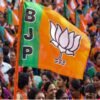Local Governance Can Save India’s Cities
In the latest mercer index 2023 of the world’s most livable cities, Hyderabad is top-ranked in India. But in the global index, it is ranked a lowly #153. Urban blight defined by air pollution, road traffic jams, frequent electricity and water supply cuts, poor law and order maintenance, is spreading across big and small cities, making the lives of citizens nasty, brutal and short. In Bangalore, commuting by road to any suburb takes as much time as flying to Mumbai. In EducationWorld’s 24th Anniversary issue, we examined why unprecedented numbers of HNWI (high net worth individuals), highly educated professionals and skilled labour are migrating to developed OECD countries (see https://www.educationworld.in/why-are-indians-succeeding-everywhere-except-in-india/). In that cover story, poor quality of civic life was insufficiently identified as a major cause. On second thought, it is a major driver of emigration.
An inevitable consequence of foolish adoption of inorganic Soviet inspired socialism as the official ideology of the State after independence, was that the annual rate of economic growth was stuck in the 3.5 percent per year groove for almost half a century. As a result, population growth, low productivity and fragmentation of landholdings prompted steady migration of ill-educated and illiterate rural citizens into India’s relatively prosperous cities and towns.
For kith and kin considerations, a large number of rural migrants were absorbed into the lowermost tier of government, i.e, municipal corporations and local government. Equipped at best with pro forma qualifications and accustomed to the routine retail corruption of village India, they permitted the reckless, unplanned growth of urban India bringing it to the edge of disaster.
It’s not as though no attention has been paid to this problem. In 1992, two important amendments to the Constitution resulted in the Rural Panchayats and Mahanagarpalika Acts being passed by Parliament to enable local government in village and urban India. All rural districts and cities were delimited into village panchayats and municipal wards. This model of local self-governance inspired by the highly successful cantons and borough local governments of Western Europe, necessitates devolution of considerable tax and spend powers on local governments. Unsurprisingly, selfish state governments have not devolved any significant tax collection and expenditure powers on local government institutions.
Industry, academia and the intelligentsia need to press for enabling the 74th and 93rd Amendment Acts to save India’s collapsing cities. Powers to collect property taxes in particular need to be devolved upon ward committees comprising elected property owners in every ward. Restricted franchise is important because only property owners will have a vested interest in ensuring orderly ward-level governance because it will enhance property values. The solution to saving India’s collapsing cities is buried in the Constitution. It is for the intelligentsia to build the pressure of public opinion for its implementation.

















Add comment